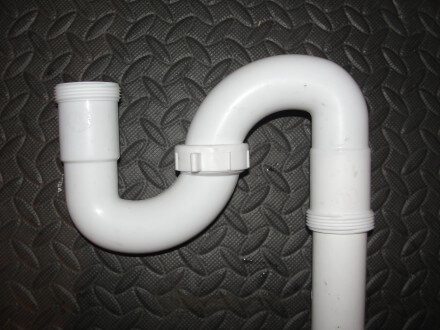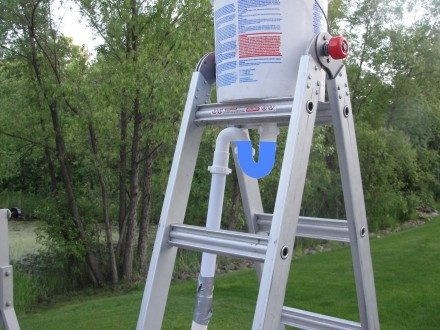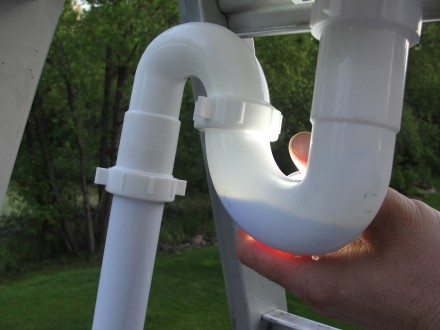A common plumbing defect found in many older houses is an "S" trap. An "S" trap is named so because it looks like an "S" on its side – it basically consists of a normal trap, and then another trap installed right up against it in an upside-down fashion, as shown below. These traps are prohibited by the Minnesota State Plumbing Code, but that doesn't mean you can't buy them at any home improvement store.
The most common places you'll find "S" traps are at plumbing fixtures that aren't vented, such as an illegal basement bathroom sink, a DIY basement bar sink, or a kitchen sink where the old steel drain in the wall was so corroded and blocked that someone installed a new drain, but never bothered to vent it.
The purpose of a trap is to prevent sewer gases, and possibly vermin, from coming in to the home. When water sits in the trap, sewer gases stay out. Have you ever noticed some nasty odors in a bathroom that you never use? It's probably because the water in the trap has completely evaporated, allowing sewer gases to come in to the home. I've actually found this condition on a number of larger occupied houses. The easiest fix for this is to periodically run a little water in the plumbing fixtures. As a longer-term solution, you could also pour RV antifreeze in to the drains; that stuff won't evaporate.
Back to "S" traps – The reason "S" traps aren't allowed is because they have the potential to suck, or 'siphon', water out of the trap as the water flows down the drain. On a properly installed "P" trap, there is a vent at the same place the drain turns downwards, which breaks the siphon. In other words, the vent prevents water from getting sucked out of the trap. How much water can get sucked out of the trap? Believe it or not, enough water to break the water seal at the trap and let sewer gases come in to the house.
To show how this works, I set up a little rig in my back yard to show how much water can get siphoned out of an "S" trap. I forgot to take a close-up before photo, so I marked up this photo below with blue to show where there was standing water in the trap. The top of the water level is called the 'weir' of the trap.
As I let the water in the 5-gallon bucket drain out, most of the water in the trap ended up getting siphoned out. I added some food coloring to the water and held my flashlight up against the back of the trap to show this.
To see how this happens, here's a quick video I took during a home inspection. Listen to the gurgling noise at the very end of the water draining – this gurgling sound is a dead giveaway that a plumbing fixture isn't properly vented.
There's usually no simple way to properly correct an "S" trap. It's usually an involved, expensive repair. On the other hand, when water is flowing in to a sink from the faucet, there's usually not enough water draining at one time to create this siphon action, so "S" traps typically don't cause any big problems. Problems occur when the sink is filled with water and then drained. Even then, the simple way of dealing with this is to just run a little extra water down the drain after the water has drained out. This will re-fill, or 'prime', the trap after the water has been siphoned out… this is the same way toilets work.
In other words, "S" traps are wrong, but they're not that big of a deal.
Reuben Saltzman, Structure Tech Home Inspections - Email - Minnesota Home Inspections








